Barwick Maypole
Northern Traditions
Barwick-in-Elmet is located just a few miles to the east of the large,
bustling city of Leeds, which might seem a surprising place to find the village
boasting England's tallest maypole.
The maypole measures 86ft (26m) in height and stands alongside the main street through
Barwick. Its location at the heart of
the village, only a few feet away from the market cross and nearby houses suggests this
maypole predates the fashion for dancing around the poles and dates back to
a time when it was the setting up of the maypole that was important. Because of
this aspect, and the large size of the maypole, it has been a tradition to
take it down every three years in order to inspect, repair and repaint the
pole, before re-erecting it on Whit Tuesday.
What makes this event even more unique is the fact that the lowering and
raising of the maypole is all done by hand, using ropes, ladders and
‘people power’. The skill, strength and expertise with which this is done
(and has been done for generations) is a real credit to the teams who take part.
After
its lowering on Easter Bank Holiday Monday, the maypole is laid across
barrels at the entrance to Hall Tower Field, where it is cleaned,
repaired and repainted. At this time four new rosette garlands are made in
the village and these are 'shown' around the neighbourhood before being
attached to the maypole prior to the raising ceremony. Ribbons and bells
also hang from the garlands and these are believed to bring good luck if
they can be acquired from the old garlands that have hung on the maypole
for the last three years.
On the day of the maypole raising a team of a round 100 men carry the maypole on their shoulders down the street to the village cross. Traditionally this team is made up of Barwick men, although volunteers from the surrounding district also help with the raising of the pole if required. Local children follow the procession, trying to grab ribbons from the garlands on the pole or spin the fox weather vane on top.
The base of the maypole is placed in the hole while the rest is supported by the pole carriers. Then the ropes attached to the upper half of the pole are fed out to the rope teams who tension them in order to steer and guide the pole as it is raised. The 'Pole Master' calls for the maypole to be lifted up and at the same time teams of 'ladder men' move in from the sides, supporting the pole. In this way the maypole is gradually raised up, pushing the ladders in under the pole to support it.
Once past the 45 degree angle, the ropes assist in hauling the pole vertical and are then used to align the maypole straight and vertical. When the pole is finally in position, the hole is back filled, with the earth and rubble tamped in around the maypole to hold it securely.
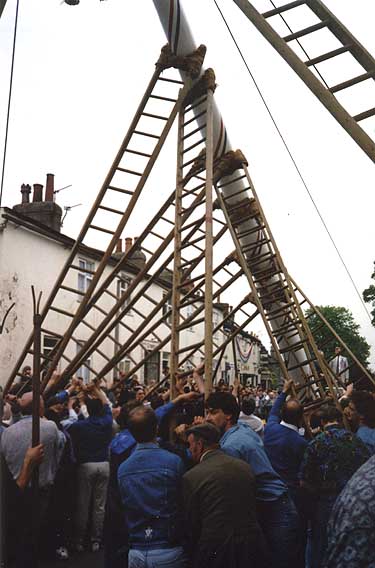
With
the maypole aloft, all that remains is the task of removing the ropes
attached above the Garlands half way up the pole. For this job a man is lifted up until he can clasp his arms around the pole and then he
shins up, climbing past the garlands and untying the ropes.
As the ropes
drop to the ground the crowd look up in expectation, will he attempt the
long climb to the very top of the pole and spin the silver fox weather
vane?
Are the conditions right?
Has he enough strength left in his arms
and legs?
The crowd shout encouragement and off he goes grasping the pole, hauling
himself up, high above the crowd. The pole becomes narrower and easier to
grasp the higher he climbs but muscles are getting tired by this time and
so he stops a yard or two below the top, gripping the pole as he
catches his breath. Looking down, he waves to the crowd and then pushes on
for the top, just a more few feet and with a long stretch of his arm, he
spins the fox. The waiting crowd let out a great cheer applauding his efforts and after a quick descent of the maypole the climber is back on
the ground, becoming the centre of attention and much congratulating.
During
the whole of the maypole raising there is a real sense of pride and achievement
amongst those taking part and for the watching crowd. The raising of this
great maypole by hand is a demonstration of real 'community strength' - showing
that when people work together, they can
achieve quite extraordinary things.
Such occasions are rare in today's fast paced way of life, but the Barwick
Maypole reminds us that this co-operative spirit has been a vital element
for generations - many hands make light work.
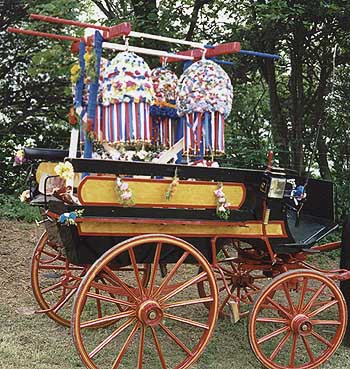
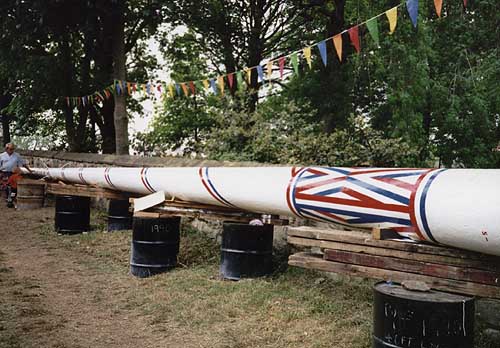
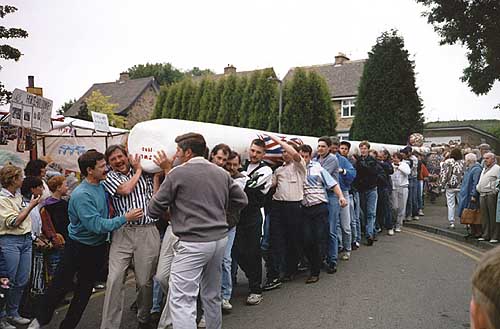
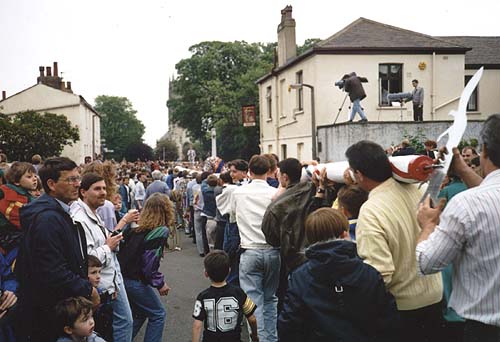
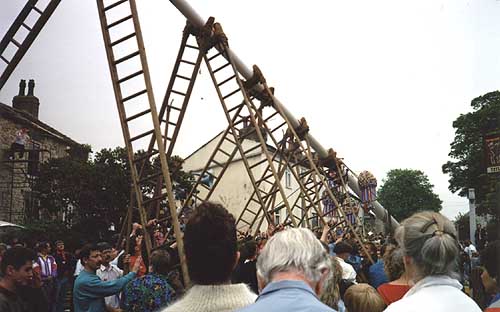
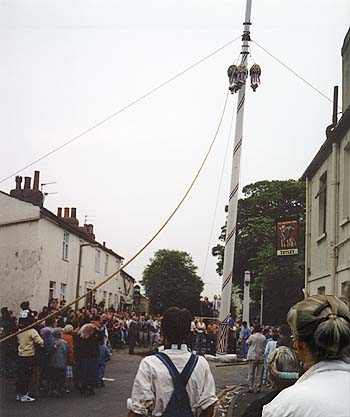
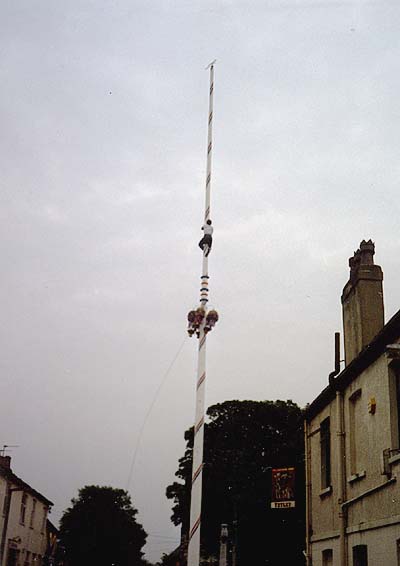
David Crabtree climbing in 1990
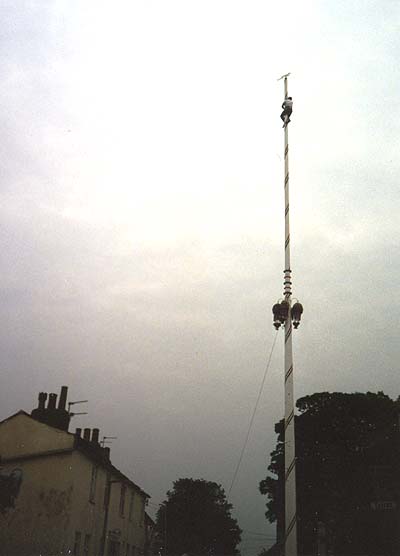
Reaching for the top!